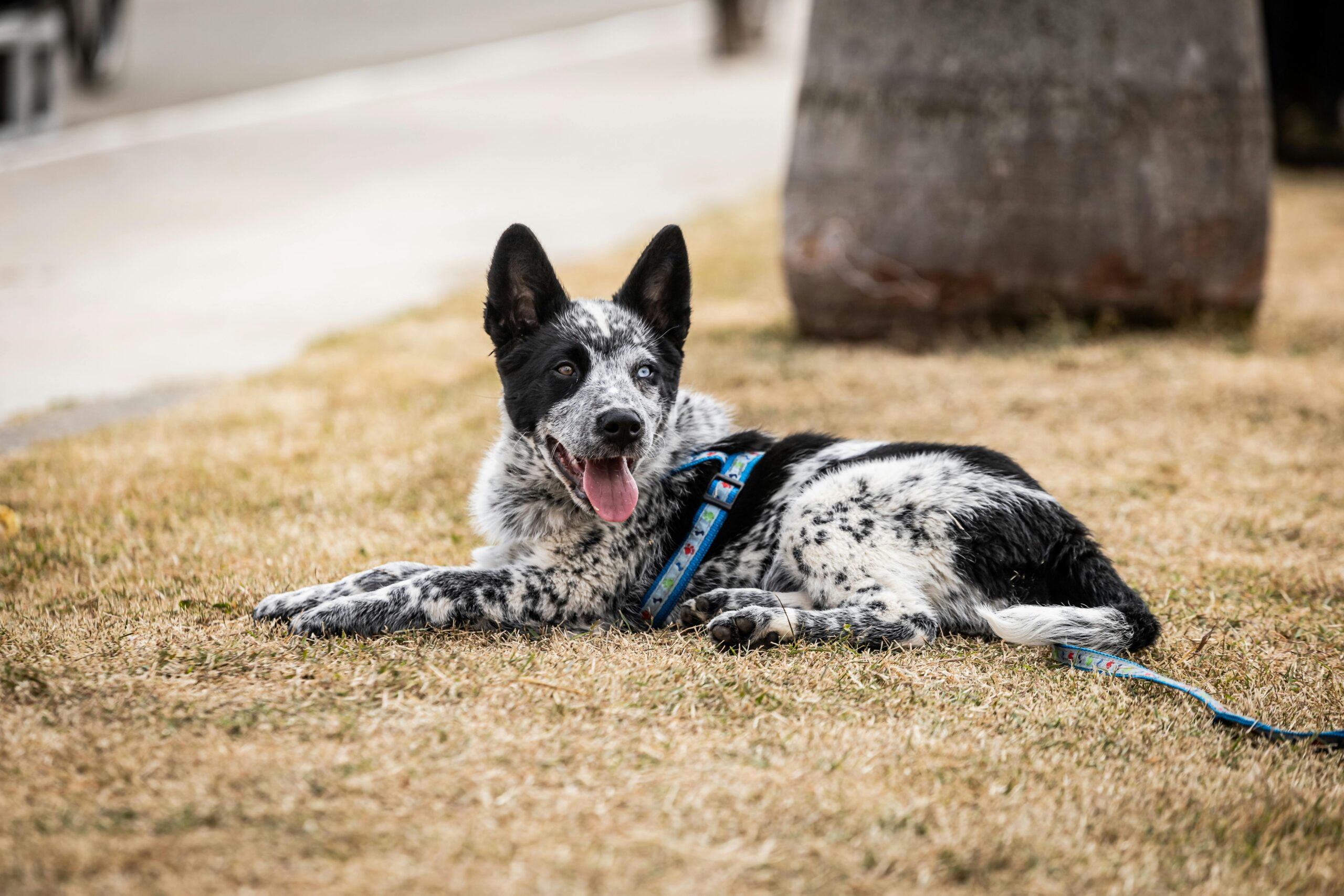Australian cattle dogs (ACD), also known as blue heelers, are shadow dogs.
They have all the complementary qualities suitable as pets for athletic professionals, such as boxers, footballers, Olympic runners, swimmers, etc.
They are just the best buddy for hiking, jogging, running, swimming, etc.
This is due to their high energy level needs, which automatically disqualifies them from living in apartments or small spaces.
Read here to learn more about breeds of dogs suitable for apartment living.
In addition, they are loyal, intelligent, and have a great protective instinct, which everyone should need in a canine friend.
Breed Overview Of Australian Cattle Dog:
Origin: Australia in the 19th century
Ancestor Breeds: Bulldogs, Collies, Dalmatians
Height: 18-22 inches (45-55cm)
Weight: 35-50 pounds (14-23kg)
Recognition: American Kennel Club 1980, Australian National Kennel Club 1965, United Kennel Club 1979.
Life span: 12 to 16 years
Hypoallergenic: None
Group: Herding dogs
Appearance:
History of Australian Cattle Dog:
As the name implies, they were bred and developed in Australia by Robert Kaleski between 1850 and 1900.
They were bred to manage livestock in Australia due to the increased number of livestock farmers.

Before their development, cattle were scattered, and it was tasking for farmers to gather them in designated areas for grazing, breeding, treatment, or sale.

They were also endangered by predators such as snakes, wild dogs, bears, eagles, hawks, goannas, foxes, feral cats, kangaroos, and dingoes.
Their introduction into the field as herders helped direct cattle to specific areas and protected them from predators.
They were the perfect breed for the job not only because they could properly herd farm animals and protect them from prey; they were also capable of enduring harsh weather and climate, which was synonymous with Australia, and they were easy to train to do the job because of their intelligence.
Australian cattle dog is a mix of various other breeds, most notably
- Collies: From Scotland, used because of their intelligence
- Old English bulldogs: From England, used because of their tenacity and strength
- Dalmatians: From Croatia, used because of their endurance and protective instincts
- Kangaroo dogs: From Australia, used because of their herding ability
They were all crossed and developed into a more efficient, robust, intelligent, and energetic breed capable of surviving and excelling in harsh climates and rugged Australian terrain.
Blue Heeler Care:
Australian cattle dogs are also called blue heelers because of their blue coat.
The ones with a red coat are called red heelers.
Blue heelers are very energetic; they require high physical and mental stimulation. for their overall well-being.
They require at least 1-2 hours of exercise daily, which can be done in various forms such as walking, jogging, and playtime.
Because of their energy requirements, they are unsuitable for small apartments with people who do not make time for exercise.
Blue heelers also require weekly grooming to prevent matting, as well as regular veterinary checkups to prevent deafness, blindness, hip dysplasia, elbow issues, skin allergies, eye problems, and so on.
How to Train a Blue Heeler:

Blue heelers are one of the breeds of dogs that are not difficult to train.
But sometimes they can be stubborn, but not as much as other large breeds of dogs.
At a very early age, they are swift in herding, and if they are not socialized and trained on time, they will likely want to herd children and any movable object around them.
They are quick to obey clear commands such as “sit, “stay, “come, “leave, “eat, etc., and can train for longer hours as long as it’s fun with treats.
They require a clear communication model using clear commands, with treats and praises as positive reinforcement.
However, trainings require consistency, patience, and positive reinforcement.
What does a Blue Heeler Eat?

Australian cattle dogs require a balanced diet with high protein and fiber content, largely because of their high energy levels.
Their active levels that exert high pressure on their joints and muscles require fuelling.
Common mixes that contain enough nutrients required for optimum health and body growth are:
- Fruits and vegetables: blueberries, apples, carrots, green beans, in small quantities.
- Meat: Chicken, lamb, beef
- High-quality protein: A mix of dry kibble and wet food
- Supplements: Joint supplement or omega-3 fatty acid
- Grains: brown rice or oat grains, depending on the individual dog and their allergies
- Water
These choices are for their high energy needs, muscle maintenance, aid digestion, and balanced nutrition.
American Cattle Dog Pros and Cons:
While they can be a great buddy, they are not best suited for every family especially those with low energy.
Before considering adopting or buying one, you should evaluate the pros and cons.
Pros:
- Obedient
- Hardworking
- Intelligent
Cons:
- High energy needs
- Separation anxiety when separated from loved ones/owners.
- Can be stubborn when not properly trained or socialized
Where to Buy or Adopt a Blue Heeler:
When adopting or buying a blue heeler into a family with children, make sure the pet animal has been well socialized and trained if you are not bringing them home as a puppy.
Ensure to adopt from animal shelter or rescue groups or you can buy from reputable breeders.


